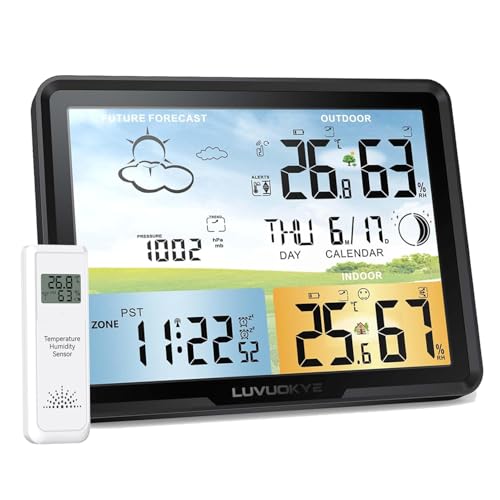Global warming is often said to increase storms and to make storms more severe. The question of whether global warming was responsible for a notable storm is often asked in conjunction with a severe storm event, such as Hurricane Harvey. Or, the inquiry might be, did global warming make the storm more intense than it would have been otherwise? While it is impossible to assert blame for a certain storm, the understanding of how global warming impacts our weather is something we can have, and global warming is a key player in storm frequency and intensity.
There are two things we must consider in the impact of global warming on weather. First, we must look at the impact of global warming on local weather. Second, we must consider the impact of global warming on the Earth’s circulation as a whole, which has a great influence on the Earth’s weather.














 UAPs, Formerly UFOs, If They Are Real How Can We Explain Their Arrival to Earth?9 days ago
UAPs, Formerly UFOs, If They Are Real How Can We Explain Their Arrival to Earth?9 days ago
 Polar Coordinate System11 days ago
Polar Coordinate System11 days ago
 Aurora Can Disrupt Electrical Devices And Even the Grid?12 days ago
Aurora Can Disrupt Electrical Devices And Even the Grid?12 days ago
 Overcoming Difficulties Encountered with Mathematics13 days ago
Overcoming Difficulties Encountered with Mathematics13 days ago



Comments
You have confirmed what I suspected, that round structures are safer than conventional ones. This principle is used in the yurt, which withstands storms.
One thing I noticed after Hurricane Katrina is that the lighthouse in Biloxi remained standing, even though many structures were leveled. I believe the round design acts much like an arch, and directs the force along the walls not perpendicular to the walls.
Irma is the strongest hurricane in the Atlantic, although some stronger ones have occurred in the Gulf of Mexico. Normally, they do not get this intense so far out. The central pressure was 914 mb yesterday, which is very low, about a tenth of the atmospheric pressure down from normal. The question is whether we have reached the tipping point, or can we reverse things. When I retire I will have to go farther inland than I now am.
As I see television images of Hurricane Irma and see the damage that this monster has wrought, I realize that the world has to rethink building techniques in certain areas, such as the West Indies. I suggest that we think of the old Scottish blackhouse, whose eaves did not overlap the walls as modern houses do, but were buried into the walls. They were designed to withstand the many storms that beset the Scottish Isles; and they withstood them well and effectively.
Also shelter belts of dense bushes and trees would take down wind speed far more effectively than a solid barrier would. Major redesign of buildings and town plans is needed.
Yes, the weather forecast is now giving us news of shifts in the jet stream, which has become erratic.When it loops southwards we, particularly in the more northerly regions, get some cold and wet weather. In recent years the weather has become erratic and unpredictable.
He did indeed. I had forgotten that.
I think being a grandma makes me feel more deeply about the Earth and what we are leaving behind for our grandchildren.
This article is a fabulous piece of work .Ty for the information.
Veronica, that the Earth is warming is easy to prove, what is problematic is how much man is doing to cause it is difficult to measure. So, large companies tend to place the blame on nature, and do as they will for higher profit. And, yes, politics favors those who contribute to a candidate.
If you recall, the Pope made a statement on global warming a short time back.
Frank, it would seem a shift in the jet stream might explain what you are experiencing in England.
BSG Superb. Very well done, sir, Great explanations This is so topical just now with all this bad weather in the news.
Global warming is a bit of a " hot potato " just now in your country with ( without being to political ) shall we say differences of opinion at the top levels.
We rarely have hurricane force winds in Britain, and I can recall at worst three or four that were possibly category 1, but the scientific predictions for global warming for this isle are coming true.Take a line running from the river Exe in the South West [which divides Devon from Cornwall] and go north westwards up to the river Tees in North East England. This is the Tees-Exe line. South east of this line the weather is predicted to be droughtier, particularly in summer; while north west of it, where I Iive, the winter storms will be worse and we will get more extreme weather events and flooding. Both of these predictions are coming true. I am fortunate that I have not experienced the worst of the extreme weather events that are predicted. The confirmation of these predictions confirm that global warming is happening and is harmful.
Ordinary level is what we did at sixteen [years ago] ; advanced level was more specialized study up to eighteen.